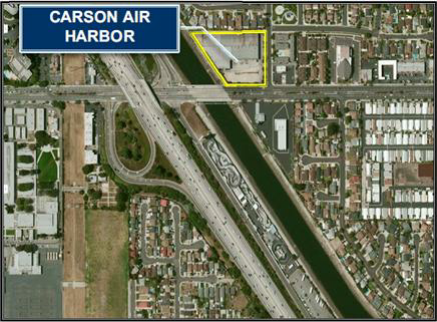– Advanced five soil borings to test for soil type and petroleum impacts using Cone Penetrometer Test
(CPT) and Rapid Optical Screening Tool™ (ROST™) technologies (these technologies help identify
petroleum impacts at various depths)
– Installed and sampled 13 groundwater monitoring wells to varying depths
– Chemically analyzed soil, groundwater, and residual petroleum samples collected from onsite
groundwater monitoring wells
Summary of Results: The Carson Air Harbor historical operations were limited to commercial activities with no known use of the type of petroleum compounds detected in the channel. Minor residual petroleum was
observed in only one groundwater well near the center of the property; however, forensic analysis revealed that this material is different from the petroleum compounds detected in the channel. Furthermore, other soil and groundwater impacts observed at this Site appear to be highest along the perimeter of the property near petroleum pipeline corridors beneath E. Carson and S. Perry Streets. On the basis of these observations, it appears that potential historical releases from the Carson Air Harbor site are not related to the seepage of petroleum into the channel.
In June 2012, the Los Angeles Regional Water Quality Control Board (LARWQCB) agreed that the Carson Air Harbor site is not likely a contributor to the petroleum hydrocarbon release in the channel and determined that no further action associated with the Dominguez Channel release was necessary at the Carson Air Harbor site.
